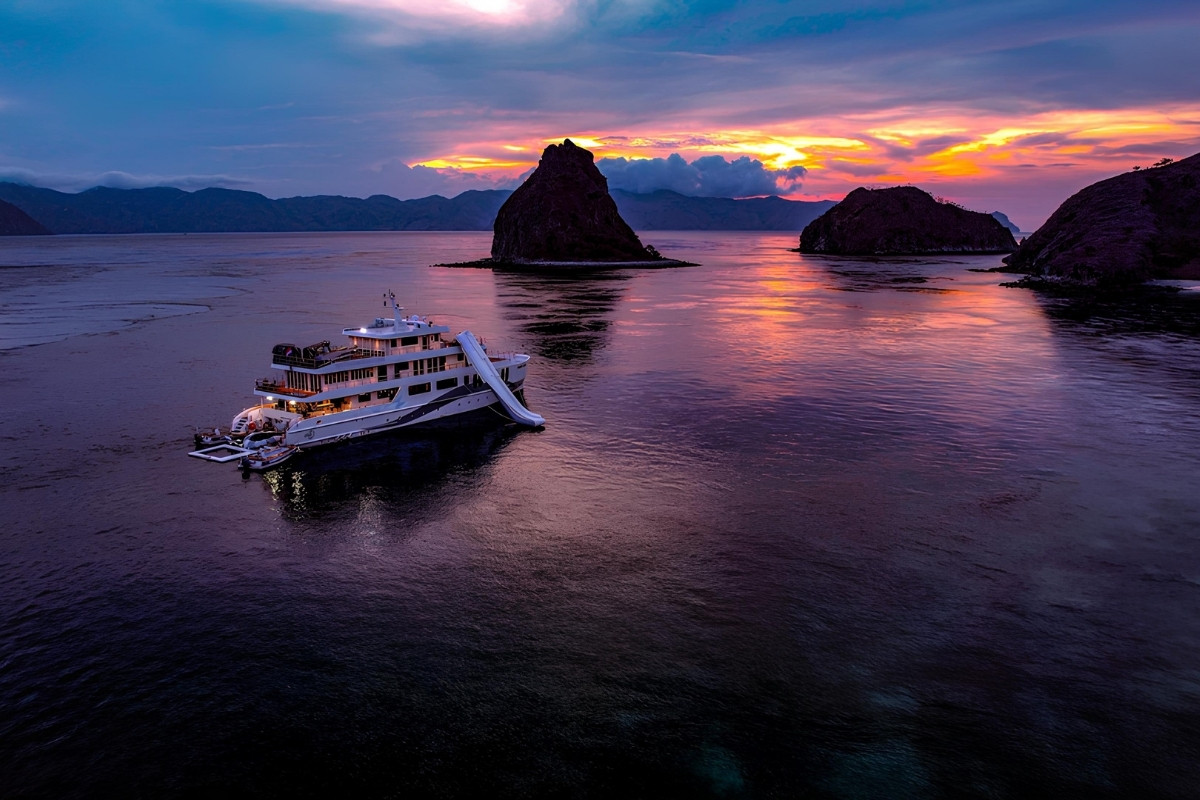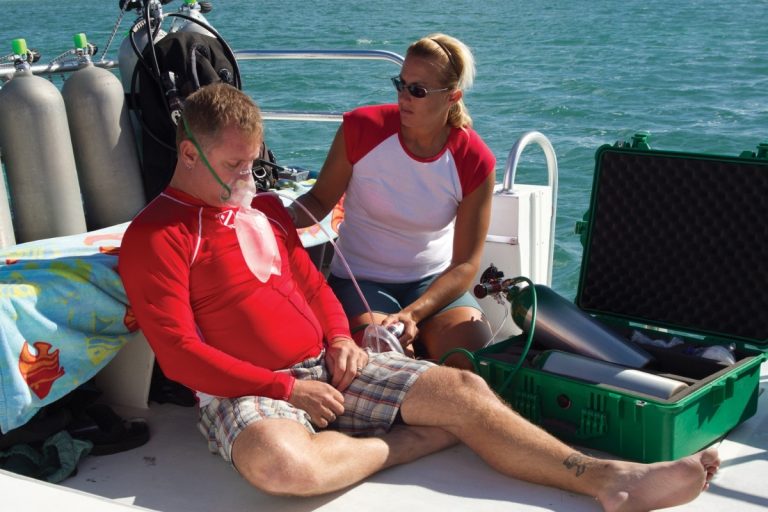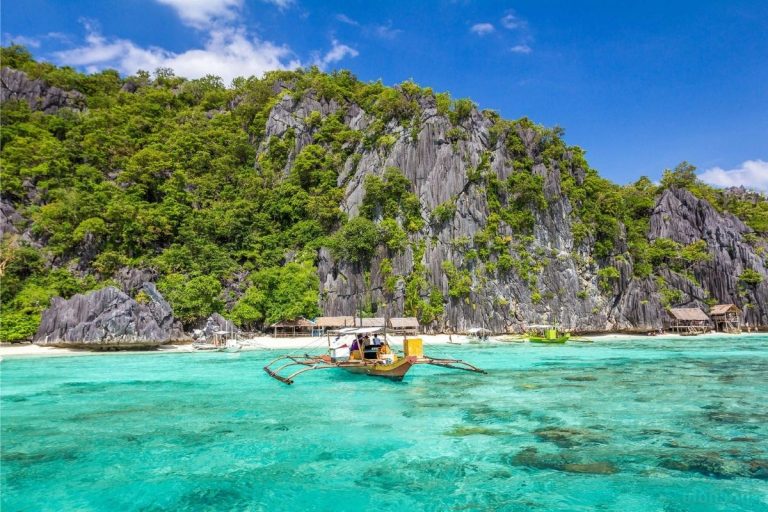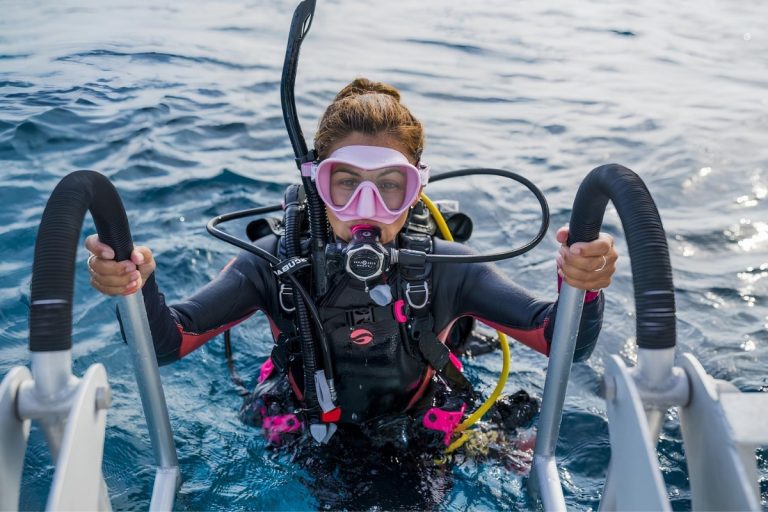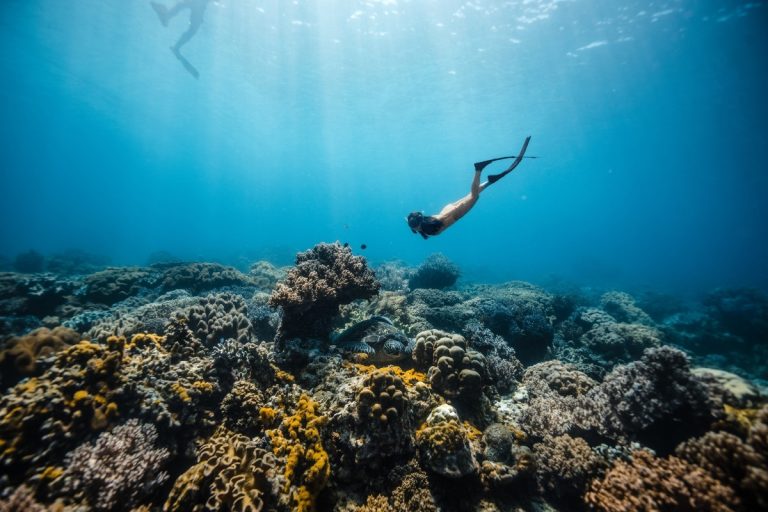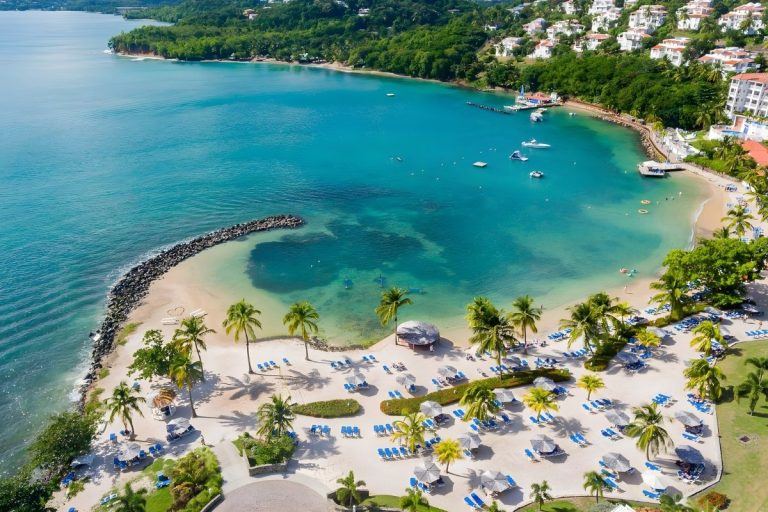- Overview of Liveaboard and Day Trip Diving
- Advantages of Liveaboard Diving
- Disadvantages of Liveaboard Diving
- Advantages of Day Trip Diving
- Disadvantages of Day Trip Diving
- Popular Liveaboard Destinations
- Popular Day Trip Destinations
- Combining Liveaboard and Day Trip Experiences
- Frequently Asked Questions
- Making the Right Choice for Your Diving Adventure
Overview of Liveaboard and Day Trip Diving
Choosing between liveaboard and day trip diving can feel overwhelming, especially when both options promise incredible underwater adventures. The decision often comes down to your personal preferences, budget, and what kind of experience you’re seeking beneath the waves.
Both approaches offer unique ways to explore the underwater world, but they cater to different types of divers and travel styles. Understanding the fundamental differences between these two diving formats will help you make an informed choice that aligns with your goals and expectations.
Definition of Liveaboard Diving
Liveaboard diving involves staying aboard a specially designed vessel for multiple days or weeks, with your floating hotel serving as both accommodation and dive platform. These boats are equipped with sleeping quarters, dining areas, and all the facilities needed for extended stays at sea.
The concept revolves around bringing divers directly to remote dive sites that would otherwise be impossible to reach on day trips. You’ll eat, sleep, and breathe diving while surrounded by fellow enthusiasts who share your passion for underwater exploration.
Definition of Day Trip Diving
Day trip diving operates from a land base, where you board a boat each morning and return to shore by evening. This approach allows you to maintain your regular accommodation on land while still accessing quality dive sites within reasonable traveling distance.
Most day trips include two to three dives, with surface intervals spent on the boat or occasionally on small islands. You’ll have the flexibility to choose different operators, dive sites, or even skip diving entirely on certain days without affecting your accommodation.
Key Differences Between Liveaboard and Day Trip
The most obvious difference lies in where you sleep, but the variations extend far beyond accommodation. Liveaboards typically offer four to five dives per day, including night dives and early morning sessions that capture marine life at its most active.
Day trips usually limit you to two or three dives due to travel time constraints. However, they provide the freedom to explore land-based attractions, sample local restaurants, and experience the culture of your destination beyond its underwater offerings.
Why Choose One Over the Other?
Your choice should reflect your diving goals and travel preferences. If you’re passionate about maximizing dive time and accessing remote sites with pristine conditions, liveaboards offer unmatched opportunities. They’re perfect for serious photographers, marine life enthusiasts, or anyone seeking total immersion in the diving lifestyle.
Day trips suit travelers who want a balanced vacation combining diving with cultural experiences, shopping, and land-based activities. They’re also ideal for those new to diving or traveling with non-diving companions who need entertainment options above water.
Advantages of Liveaboard Diving
Liveaboard diving transforms your entire vacation into an underwater adventure, offering benefits that day trips simply cannot match. The convenience and comprehensive nature of these floating dive resorts create an experience that many divers find addictive.
The ability to wake up directly above world-class dive sites eliminates the daily commute that eats into precious diving time. Instead of spending hours traveling to and from dive locations, you can roll out of bed and be underwater within minutes of finishing breakfast.
Comprehensive Exploration of Dive Sites
Liveaboards access remote locations that remain untouched by day boat traffic, offering pristine conditions and abundant marine life. These vessels can travel overnight to reach distant reefs, seamounts, and underwater formations that would require prohibitively long journeys from shore.
The extended time at each location allows for thorough exploration of dive sites from multiple angles and at different times of day. You might dive the same reef at dawn, midday, and dusk, witnessing how marine behavior changes throughout the daily cycle.
Frequent Diving Opportunities
Most liveaboards offer four to five dives per day, including night dives that reveal nocturnal marine life. This intensive schedule appeals to dedicated divers who want to maximize their underwater time and make the most of their vacation investment.
The frequent diving schedule also allows for skill development and confidence building, as you’ll have multiple opportunities to practice techniques and observe marine life behavior patterns over consecutive days.
Inclusion of Meals and Gear Setup
Liveaboard packages typically include all meals, snacks, and beverages, eliminating the need to search for restaurants or worry about dietary requirements. The crew handles gear setup, cleaning, and maintenance, allowing you to focus entirely on diving and relaxation.
This all-inclusive approach removes the daily hassles of vacation planning, creating a stress-free environment where your biggest decision might be choosing between the fish or chicken for dinner.
Unique Itineraries Available
Many liveaboards offer specialized trips focusing on specific interests like wreck diving, shark encounters, or underwater photography. These themed voyages attract like-minded divers and often include expert guides or guest speakers who enhance the educational value of your experience.
Seasonal itineraries might follow migration patterns, spawning events, or optimal weather conditions, ensuring you’re diving at the best possible times for specific marine encounters.
Social Opportunities for Divers
The communal nature of liveaboard life creates natural opportunities to meet fellow divers from around the world. Shared meals, dive briefings, and evening relaxation time foster friendships that often extend far beyond the trip itself.
Many divers find that the social aspect becomes as valuable as the diving itself, with group dynamics enhancing the overall experience through shared excitement, photography tips, and diving stories.
Disadvantages of Liveaboard Diving
While liveaboards offer incredible diving experiences, they come with limitations that don’t suit every traveler’s needs or preferences. Understanding these drawbacks helps set realistic expectations and avoid disappointment.
The confined nature of boat life can feel restrictive after several days, especially for those accustomed to having multiple accommodation and dining options. The structured schedule, while efficient for diving, leaves little room for spontaneous activities or personal downtime.
Higher Costs Compared to Day Trips
Liveaboard trips typically cost significantly more than equivalent day trip packages, with prices reflecting the all-inclusive nature and specialized vessels required for extended sea voyages. Budget-conscious divers might find the upfront investment challenging, even though the per-dive cost often proves competitive.
Additional expenses like equipment rental, alcoholic beverages, and gratuities can add substantially to the base price. For those seeking budget-friendly dive vacations, day trips often provide better value for money, especially when combined with affordable land-based accommodation.
Limited Land-Based Activities
Spending all your time at sea means missing opportunities to experience local culture, cuisine, and attractions. You won’t have chances to visit markets, museums, or historical sites that add cultural depth to travel experiences.
This limitation particularly affects travelers who enjoy diverse vacation experiences or those visiting destinations known for their land-based attractions as much as their diving.
Potential for Seasickness
Extended time on boats increases exposure to motion sickness, which can severely impact your diving enjoyment and overall trip satisfaction. Even experienced divers sometimes struggle with seasickness on longer voyages, especially in rough weather conditions.
The confined quarters make it difficult to escape motion-related discomfort, and seasickness can prevent participation in dives, effectively wasting the investment in your liveaboard experience.
Fewer Options for Non-Divers
Liveaboards cater specifically to divers, offering limited entertainment for non-diving travel companions. Spouses, friends, or family members who don’t dive will find few activities beyond sunbathing, reading, and basic snorkeling.
This limitation makes liveaboards less suitable for mixed groups or couples where only one person dives seriously, potentially creating relationship stress during what should be a relaxing vacation.
Advantages of Day Trip Diving
Day trip diving offers flexibility and variety that appeals to many travelers, especially those who prefer maintaining control over their vacation schedule. This approach allows you to sample different aspects of a destination while still enjoying quality underwater experiences.
The ability to return to land each evening provides comfort and security for nervous travelers while offering access to local amenities, restaurants, and cultural experiences that enrich your overall vacation.
Flexibility in Scheduling
Day trips allow you to choose which days to dive based on weather conditions, personal energy levels, or other planned activities. You can easily skip a day of diving to explore land attractions, recover from fatigue, or simply relax without losing accommodation investments.
This flexibility proves particularly valuable for travelers with varying interests or those who want to pace their diving activities throughout a longer vacation.
More Affordable Options
Day trip diving typically costs less than liveaboard packages, making it accessible to budget-conscious travelers or those wanting to extend their vacation length. You can choose from various price points and operators, often finding deals that fit specific budget constraints.
The ability to select your own accommodation and dining options provides additional cost control, allowing you to balance splurges and savings according to your priorities.
Opportunity to Explore Land Attractions
Staying on land provides access to cultural sites, local markets, restaurants, and entertainment options that add depth to your travel experience. You can explore historical landmarks, sample authentic cuisine, and interact with local communities in ways impossible on liveaboards.
This cultural immersion often creates more well-rounded travel memories and provides interesting contrasts to your underwater adventures.
Less Commitment Required
Day trips require minimal advance commitment, allowing spontaneous decisions about diving activities. You can book trips just days in advance, change operators if unsatisfied, or modify your plans based on weather or personal preferences.
This low-commitment approach suits travelers who prefer flexibility or those unsure about their diving interests and capabilities.
Disadvantages of Day Trip Diving
Day trip diving comes with inherent limitations that can frustrate serious divers or those seeking comprehensive underwater experiences. The constraints of operating from land bases restrict both the sites you can visit and the time available for diving activities.
Daily logistics like gear setup, travel time, and schedule coordination can become tedious, especially over multiple days of diving. These operational aspects detract from the seamless experience that liveaboards provide.
Limited Access to Remote Sites
Day boats can only reach sites within a few hours of port, limiting your diving to areas that may experience heavy traffic from multiple operators. The best and most pristine dive sites often lie beyond day trip range, requiring liveaboard access.
This geographic limitation means you might miss spectacular diving opportunities that exist just beyond the practical reach of day boat operations.
Daily Gear Setup Required
Each day trip requires setting up, breaking down, and transporting your diving equipment, creating repetitive tasks that consume time and energy. Gear management becomes particularly challenging when using rental equipment that may vary between operators.
The daily equipment routine can feel tedious, especially when contrasted with liveaboard convenience where crew members handle most gear-related tasks.
Fewer Social Interactions
Day trip groups change frequently, limiting opportunities to develop friendships with fellow divers. The shorter time together and focus on logistics leave less opportunity for meaningful social connections.
Without shared meals and evening activities, day trip diving lacks the community atmosphere that many divers value as an important part of their vacation experience.
Potential for Missed Dive Opportunities
Weather cancellations, equipment problems, or scheduling conflicts can result in missed diving days that are difficult to recover. Unlike liveaboards that can adjust itineraries or wait out weather, day trips operate on fixed schedules with limited flexibility.
These missed opportunities can be particularly frustrating when you have limited vacation time or specific diving goals you hoped to achieve.
Popular Liveaboard Destinations
Liveaboard diving destinations represent some of the world’s most spectacular underwater environments, chosen specifically for their remote locations and exceptional marine biodiversity. These locations justify the investment in liveaboard travel through experiences impossible to achieve any other way.
The best seasonal destinations in Southeast Asia offer incredible diversity, from macro photography opportunities to large pelagic encounters. Planning your liveaboard adventure around optimal seasons ensures the best possible conditions and marine life encounters.
Komodo Island
Komodo National Park offers some of Indonesia’s most thrilling diving, with strong currents that attract massive schools of fish and large pelagic species. The dramatic underwater topography includes steep walls, pinnacles, and coral gardens that support incredible biodiversity.
Manta rays congregate at cleaning stations throughout the year, while the famous Komodo dragons on land add unique appeal to surface intervals and island excursions.
Raja Ampat
Known as the epicenter of marine biodiversity, Raja Ampat boasts the highest recorded fish species count of any diving destination. The remote location in Indonesia’s far east requires liveaboard access to fully appreciate its scattered islands and dive sites.
Underwater landscapes range from vibrant coral gardens to dramatic drop-offs, with macro life and wide-angle photography opportunities in equal abundance.
Galapagos
The Galapagos Islands offer encounters with marine life found nowhere else on Earth, including marine iguanas, flightless cormorants, and endemic fish species. The remote Pacific location makes liveaboard travel essential for accessing the best dive sites.
Seasonal variations bring different species, with hammerhead shark aggregations and whale shark encounters highlighting specific times of year.
Cozumel
Mexico’s Cozumel offers world-class drift diving along spectacular coral reefs, with crystal-clear visibility and abundant Caribbean marine life. The island’s position in the Mesoamerican Reef system provides access to diverse underwater environments.
Liveaboards here focus on maximizing dive time while avoiding the crowds that frequent popular day trip sites during peak tourist seasons.
Palau
Palau’s pristine reefs and World War II wrecks provide diverse diving experiences in one of the Pacific’s most protected marine environments. The famous Blue Corner and German Channel offer encounters with sharks, manta rays, and schooling fish.
The remote location and scattered dive sites make liveaboard travel the most efficient way to experience Palau’s underwater treasures while minimizing travel time between locations.
Popular Day Trip Destinations
Day trip diving destinations offer excellent underwater experiences while maintaining convenient access to land-based amenities and cultural attractions. These locations provide quality diving without the commitment and expense of liveaboard travel.
Accessibility and variety characterize the best day trip destinations, offering multiple operators, diverse dive sites, and the flexibility to combine diving with other vacation activities.
Local Dive Sites in Hong Kong
Hong Kong’s waters offer surprising diversity for urban diving, with artificial reefs, natural rock formations, and occasional encounters with larger marine species. The top 10 dive sites around Hong Kong include locations suitable for all skill levels, from shallow training areas to more challenging deeper sites.
Local operators provide convenient access to these sites while allowing divers to enjoy Hong Kong’s world-class dining, shopping, and cultural attractions between diving days.
Day Trips in the Bahamas
The Bahamas’ crystal-clear waters and abundant marine life make it ideal for day trip diving, with numerous operators offering trips to different reef systems and blue holes. The shallow, warm waters suit divers of all experience levels.
Shark encounters, colorful coral reefs, and historic wrecks provide diverse diving experiences within easy reach of resort areas and tourist infrastructure.
Exploring the Great Barrier Reef
Australia’s Great Barrier Reef offers world-famous day trip diving from Cairns and Port Douglas, with high-speed catamarans reaching outer reef sites in reasonable time. The variety of operators and price points accommodates different budgets and preferences.
The reef’s massive size ensures that day trip operators can access pristine sections while providing the infrastructure and safety standards expected by international visitors.
Day Trips in Mexico
Mexico’s Caribbean and Pacific coasts offer excellent day trip diving, from Cozumel’s drift dives to the cenotes of the Yucatan Peninsula. The established tourism infrastructure provides reliable operators and diverse accommodation options.
Seasonal variations bring different marine life encounters, while the rich cultural heritage provides compelling land-based activities for rest days or non-diving companions.
Combining Liveaboard and Day Trip Experiences
Smart divers often combine both liveaboard and day trip experiences within a single vacation or across multiple trips to maximize their underwater adventures. This hybrid approach captures the benefits of both formats while minimizing their respective limitations.
Strategic planning allows you to experience remote liveaboard destinations while also enjoying the cultural and flexibility benefits of day trip diving, creating more comprehensive and satisfying dive vacations.
Benefits of Combining Both Options
Combining liveaboard and day trip diving provides the ultimate diving vacation, offering access to remote sites while maintaining opportunities for cultural exploration and relaxation. This approach maximizes dive site variety and marine life encounters.
The contrast between intensive liveaboard diving and more relaxed day trip schedules creates natural pacing that prevents dive fatigue while maintaining excitement and adventure throughout your vacation.
Planning a Hybrid Trip
Successful hybrid trips require careful planning to balance logistics, budgets, and timing. Consider starting with day trips to assess your diving interests and comfort levels before committing to liveaboard adventures.
Alternatively, use day trips as bookends to liveaboard experiences, allowing time to recover from intensive diving schedules while still maximizing your underwater time.
When to Choose Each Option
Choose liveaboards for accessing remote destinations, maximizing dive frequency, or pursuing specific marine life encounters that require extended time at sea. Day trips work better for cultural exploration, budget management, or when traveling with non-divers.
Seasonal considerations often dictate the best choice, with some destinations offering optimal liveaboard conditions during specific months while providing good day trip diving year-round.
Tips for a Successful Mixed Experience
Plan your hybrid trip with adequate rest time between intensive liveaboard periods and day trip activities. Allow for flexibility in your schedule to accommodate weather delays or equipment issues that might affect transitions between different diving formats.
Consider your gear requirements carefully, as switching between operators may require different equipment setups or rental arrangements that could complicate your travel logistics.
Frequently Asked Questions
What is liveaboard diving?
Liveaboard diving involves staying on a vessel for multiple days or weeks, diving directly from the boat to remote dive sites.
What are the benefits of day trip diving?
Day trip diving offers flexibility, access to land-based attractions, and is typically more affordable than liveaboard options.
Which option is better for serious divers?
Liveaboard diving is often preferred by serious divers as it allows for more dives per day and access to remote, pristine sites.
Can I combine liveaboard and day trip diving?
Yes, many divers choose to combine both experiences to maximize their underwater adventures and cultural experiences.
What are some popular liveaboard destinations?
Popular liveaboard destinations include Komodo Island, Raja Ampat, the Galapagos, Cozumel, and Palau.
What are some popular day trip diving locations?
Popular day trip diving locations include Hong Kong, the Bahamas, the Great Barrier Reef, and Mexico.
Making the Right Choice for Your Diving Adventure
Ultimately, the decision between liveaboard and day trip diving hinges on your individual preferences, budget, and desired experiences. Whether seeking an immersive underwater journey or a balanced vacation with cultural exploration, understanding the unique characteristics of each option will help you create unforgettable diving memories.
